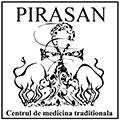The action of acupuncture as well as the curative properties of herbs allow us to make medullary regeneration treatments to patients suffering from partial medullary lesions. Where the entire medullary segment is damaged, we use techniques of revitalization and tonification of the osteoarticular and neuromuscular system; of tissue and organ revitalization. Thus a better function of the whole body is assured, to increase quality of life and to alleviate the specific symptoms (muscle atrophy, ankylosis and articular deformity, bed-sores etc.)
What Are Medullary Lesions?
The medullary lesion is a damage or a trauma of the medullary cord, accompanied by the total or the partial impairment of the functions performed by the affected segment of bone marrow. Thus, there occur deficiencies and vegetative, motor, reflex and sensory disorders.
Damage of the medullary tissue is caused by vertebral-medullary traumas (accidents, falls, concussions of the spinal cord) or by spinal diseases with degenerative action upon the medullary system (transverse myelitis, multiple sclerosis etc.); by compressive tumors, vascular disorders, thromboembolies etc..
Where there are vertebral-medullary traumas, the medullary lesions occur as a result of concussion, dilaceration or severance of the bone marrow; of a medullary ischemia (the blood supply is cut off by occlusion or compression of the afferent arteries, a process generating necrosis of the area of perfused bone marrow) or by a hemorrhagic process accompanied by formation of compressive hematomas.
The severity of neurological disorders is also defined by the type of medullary lesion – whether it is a partial or a total one – and by the affected medullar section. Complete medullary lesions located at cervical level cause tetraplegia. The ones located in the toraccal and lumbar section of the backbone cause paraplegia, while those located in the lumbar section will trigger the cauda equina syndrome (cauda equina/horse’s tail is called the bundle of spinal nerves running through the lumbar, sacral and coccigian section). Tetraplagia is defined by paralysis of the lower limbs; partial or total paralysis of the upper limbs; muscle disorders in the upper part of the trunk; respiratory disorders, coughing; miction and defecation disorders. Paraplegia includes such symptoms as paralysis of the lower limbs, of the trunk muscles; sphincter and sensory disorders. Cauda equina syndrome is caused by lesions located under vertebra L2; it is defined by lax paralysis, sensory, vegetative, digestive and urinary disorders.
Treatment
The cause of the medullary lesions will determine the protocol in the patient’s healing process. Thus, where there are partial medullary lesions caused by compression of the bone marrow, we will try to resorb and eliminate the hematomas or the compressive tumors from the body. Releasing the pressure exerted upon the spinal cord will restore the impaired functions. In addition, we shall use certain substances from herbs, so we could coordinate the decompression process of the medullary cord in the medullary canal, and also of the compressed nerve branches.
Where there are lesions caused by vertebral-medullary traumas, the affected bone marrow areas are regenerated by stimulating a cerebral centre and by speeding up the processes of damaged nerve-tissue restoration. The tissular regeneration is done by Tibetan acupuncture techniques that activate a body’s self-healing processes, namely they direct and specialize the stem cells in the body as nerve cells.
Where the medullary lesions are caused by degenerative medullary disorders, both their causes and the medullary lesions are treated (by regeneration techniques similar to the previously mentioned ones). However, where the nerve cells are degenerated beyond repair, the functions performed by the respective segment will be relocated to the functional areas of the medullary tissue.
In order to treat the medullary lesions caused by medullary ischemias, we shall treat the circulatory system, revitalizing the obstructed or compressed arteries, and eliminating the obstructing or compressive factors. The causes will also be treated (hepatic, thyroid and renal dysfunctions) that led to thrombi formation. The administered medicinal herbs contribute to the elimination of the dead cells from the ischemic tissues and to the replacement of the dysfunctional cells with healthy ones.

